Animals
“Chicken Teeth: Decoding the Dental Mysteries of Chickens”
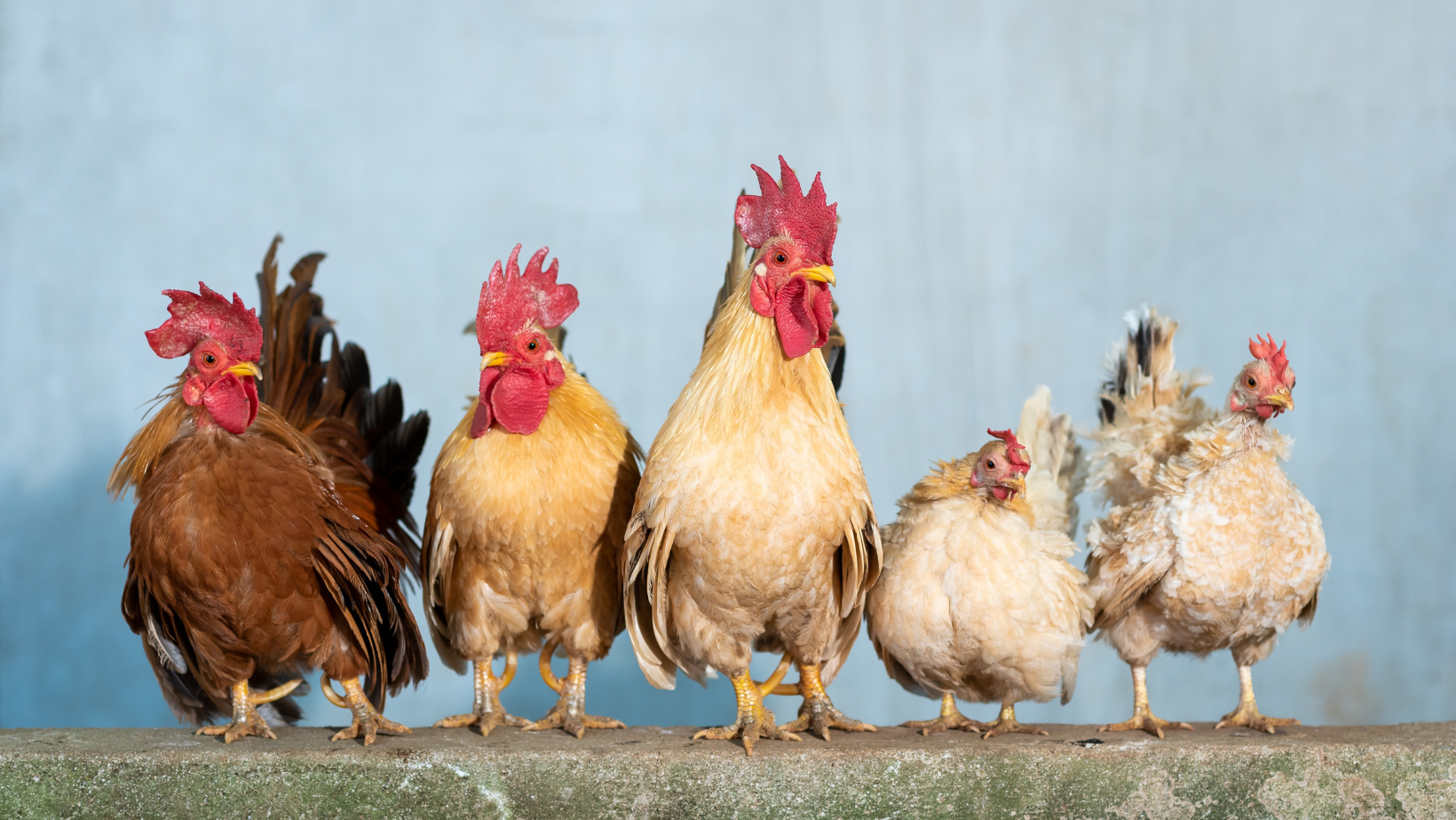
“Chicken Teeth: Decoding the Dental Mysteries of Chickens”
Have you ever wondered about the dental mysteries of chickens? It’s a topic that often leaves many scratching their heads in curiosity. Chickens, those ubiquitous farmyard birds, have long been a subject of fascination and folklore.
But when it comes to their dental anatomy, there’s a surprising amount to uncover. In this comprehensive exploration titled “Chicken Teeth: Decoding the Dental Mysteries of Chickens,” we delve into the intricacies of this unusual subject.
This article is designed for the curious minds, the backyard poultry enthusiasts, and the professional ornithologists alike. We’re going to tackle some of the most intriguing questions:
Do chickens have teeth? What is the history and evolution of chicken dentition? And what does all this mean for our understanding of avian biology? Through a combination of scientific research and engaging storytelling, we’ll uncover the secrets hidden within the beaks of these fascinating creatures.
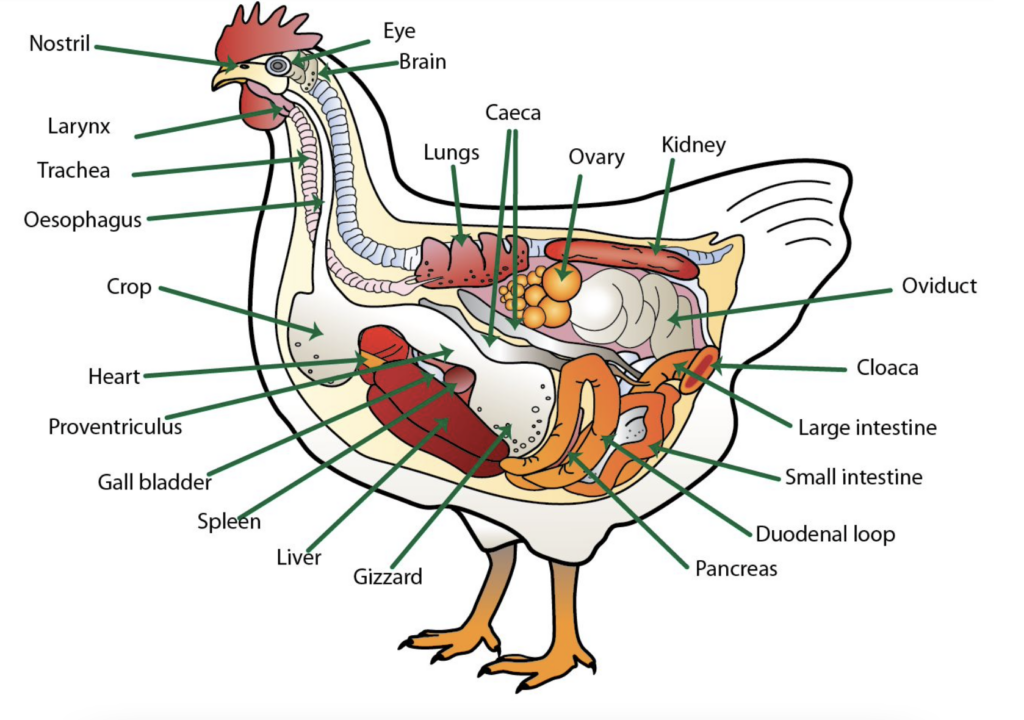
Our journey through the world of chicken teeth will take us back in time to the age of dinosaurs, revealing the connections between ancient creatures and modern chickens.
We’ll explore how evolutionary forces have shaped the beaks and oral structures of chickens, providing insight into their feeding habits, behaviors, and adaptation strategies.
The absence of teeth in chickens, a defining characteristic of modern birds, opens up a host of questions about bird anatomy, diet, and evolutionary biology.
By examining the role of genes, the environment, and natural selection in the development of chicken beaks, we can gain a deeper appreciation of the complexities of nature and the ongoing dance of evolution.
The Historical Puzzle of Chicken Dentition
The Evolutionary Tale of Chicken Teeth
Forget clucking and scratching: rewind the evolutionary clock, and our beloved barnyard chickens reveal a lineage far wilder than their modern cooing suggests.
In the shadows of prehistoric jungles, their ancestors strutted with the swagger of feathered dinosaurs, sporting fearsome beaks armed with a secret weapon – teeth.
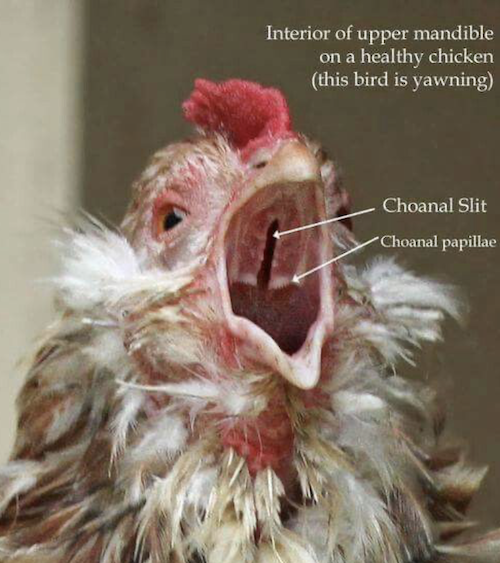
Unraveling this feathered family tree is a detective story written in stone. Paleontologists, the bone whisperers of the ancient world, have painstakingly pieced together a lineage that stretches back 150 million years, to the theropod dinosaurs.
These agile predators, renowned for their razor-sharp claws and fearsome appetites, were the T-Rexes of their time, dominating the Cretaceous landscape.
But within this ferocious family, a quieter revolution was brewing. One branch, the Maniraptora, started sprouting feathers, trading scales for plumage. They dabbled in flight, evolving nimble wings and hollow bones, transforming from fearsome hunters into graceful gliders. And somewhere among these feathered pioneers, the ancestors of our modern chickens took flight.
But evolution rarely takes a straight path. While their cousins, the birds of prey, honed their beaks into surgical instruments, the chicken lineage went rogue. Their jaws shortened, beaks hardened, and a curious surprise emerged – teeth. Yes, teeth! Tiny serrations lined the beaks of these early chickens, a vestige of their toothy past.
These “chicken-osaurs,” as some playfully call them, were omnivores, crunching seeds and insects alongside the occasional unlucky worm. Their feathered bodies sported a kaleidoscope of colors, far removed from the familiar brown hens of today. They scurried through the undergrowth, flitting amongst ferns and dodging the hungry gaze of larger predators.
Their toothy reign, however, was short-lived. Over time, these serrations gradually disappeared, replaced by the tough, keratinized beaks we know today. This shift likely aided in the success of modern chickens, allowing them to efficiently peck and grind a wider variety of food.
Today, as we watch our feathered friends strut and cluck, a silent echo of their toothy past whispers through their very bones. They are a living testament to the remarkable story of evolution, a reminder that even the most domesticated creatures carry within them the wild whispers of their long-lost lineage.
So next time you crack open a fresh egg, remember: you’re not just enjoying breakfast, you’re holding a piece of prehistoric history, a tangible link to the dinosaurs that strutted the Earth millennia ago. The clucking in your backyard may sound familiar, but the story behind it is anything but ordinary.
Fossil Evidence and Modern Discoveries
A look at recent archaeological findings shedding light on chicken evolution.
Understanding the Anatomy of Chickens
Inside the Beak: A Closer Look
A chicken’s beak isn’t a single bone, but two: the upper maxilla and the lower mandible, hinged together at the base. This allows for a wide range of motions, from delicate preening to forceful digging.
Layers of Ingenuity:
- Keratinized sheath: The hard outer layer, made of the same protein as our hair and nails, protects the sensitive inner bone and provides a tough grip.
- Sensory superpowers: Nerves embedded throughout the beak tip give chickens an acute sense of touch,taste, and pressure, helping them locate and manipulate food with precision.
- Multi-talented tool: From scooping up seeds to cracking open nuts, the beak’s shape and strength make it adept at a variety of tasks. Serrations on the inner edges of some breeds even aid in tearing and shredding food.
Beyond Pecking:
- Preening power: Chickens meticulously maintain their feathers using their beaks, removing dirt and parasites,and keeping their plumage in top condition.
- Social interactions: Beaks play a crucial role in chicken communication, from gentle feather nibbles expressing affection to dominance displays involving beak-to-beak contact.
- Defense and offense: While not exactly known for their fighting prowess, chickens can inflict surprising pecks with their beaks if threatened.
So next time you see a chicken pecking at the ground, remember that you’re witnessing not just a mealtime routine, but a complex dance of anatomy, senses, and evolution in action. This humble beak is a testament to the ingenuity and adaptability that have allowed chickens to thrive for millions of years.
The Myth of Chicken Teeth: Debunking Common Misconceptions
Addressing popular myths and misconceptions about chickens and teeth.
When it comes to chickens and their dental anatomy, there are numerous myths and misconceptions that have circulated over the years.
In this informative article, we aim to dispel these popular fallacies and provide accurate information about the fascinating world of chickens and their teeth – or the lack thereof.
Contrary to some beliefs, chickens do not possess conventional teeth like humans, but they do have a unique adaptation known as a “gizzard,” which plays a crucial role in their digestion.
By addressing these common misunderstandings, we strive to enhance your understanding of chickens and contribute to a more accurate portrayal of these remarkable birds.
If you’re curious about the truth behind these myths or want to learn more about the captivating world of chickens, continue reading our comprehensive guide for valuable insights and reliable information.
The Role of Genetics and Diet
Genetic Factors in Beak Development
Genetics plays a pivotal role in the development of chicken beaks. The beak’s shape, size, and characteristics are largely determined by the genetic makeup of the bird. Different genes control various aspects of beak development, including its length, curvature, and the presence of serrations or adaptations for specific functions.
Selective breeding over generations has allowed humans to manipulate these genetic factors to create chicken breeds with distinct beak shapes suited for various purposes.
For example, some breeds have short, stout beaks ideal for foraging in confined spaces, while others have longer, more slender beaks suitable for pecking at insects or reaching deep into the soil for food.
Understanding the genetic underpinnings of beak development not only enables us to breed chickens for specific traits but also sheds light on the broader processes of evolution and adaptation in avian species.
By studying the genetics of chicken beaks, scientists gain insights into the evolutionary history of these birds and how they have adapted to their diverse ecological niches over time. This knowledge not only benefits poultry breeding but also contributes to our understanding of biology and evolution.
The Impact of Diet on Oral Health in Chickens
Examining how a chicken’s diet influences its oral health and beak condition.
A chicken’s diet plays a crucial role in influencing its oral health and beak condition.
The beak is a vital organ for a chicken, serving not only as a tool for food consumption but also for social interactions and grooming. The diet directly affects the wear and maintenance of the beak.
- Nutritional Balance: A balanced diet is essential to maintain a healthy beak. Chickens require a mix of nutrients, including vitamins, minerals, and proteins, to promote proper beak growth and maintenance. A deficiency in these nutrients can lead to beak abnormalities.
- Abrasive Materials: Chickens often consume grains, seeds, and grit as part of their diet. These natural abrasives help grind down the beak’s outer layers, preventing overgrowth. A lack of access to such materials can result in beak issues.
- Diet Consistency: Inconsistent or unbalanced diets can lead to irregular beak growth. For example, a diet high in soft, processed foods may not provide enough natural wear on the beak, leading to overgrowth.
- Calcium Intake: Adequate calcium intake is crucial for maintaining strong beaks. Calcium deficiency can result in brittle beaks, making them more susceptible to fractures.
- Foraging Behavior: Chickens that have the opportunity to forage for insects, plants, and other natural foods tend to have healthier beaks. This natural foraging behavior promotes beak use and wear.
- Overgrown Beaks: If a chicken’s diet doesn’t promote natural beak wear, overgrown beaks can occur. These overgrown beaks can lead to difficulty eating and drinking, potentially causing malnutrition and dehydration.
- Behavioral Issues: In some cases, a poor diet can lead to abnormal behaviors like pecking or plucking, which can damage the beak further.
In summary, a well-balanced diet with access to natural abrasive materials is essential for maintaining a chicken’s oral health and beak condition. Monitoring a chicken’s diet and providing opportunities for natural foraging can help prevent common beak-related issues and promote overall bird health.
Comparative Avian Dentistry
Chickens Vs. Other Birds: A Comparative Study
A comparative analysis of dental structures in chickens and other bird species reveals intriguing insights into avian evolution and adaptation. Unlike mammals, most birds, including chickens, lack conventional teeth. Instead, their oral structures have evolved to fulfill specific functions related to their dietary preferences and survival strategies. Here’s a brief examination of dental structures in chickens compared to other bird species:
- Chickens (Galliformes):
- Chickens belong to the Galliformes order, characterized by a unique adaptation called a “gizzard.” Chickens have no teeth in their mouths, but their gizzard, a muscular stomach compartment, is equipped with small stones or grit that helps grind and pulverize their food.
- The beak of chickens varies in shape and size depending on the breed and their dietary habits. Different breeds may have beaks suited for pecking, foraging, or specialized tasks.
- Waterfowl (Anseriformes):
- Ducks and geese, which belong to the Anseriformes order, have flattened bills with serrations along the edges. These serrations function like “teeth” to help filter food from the water. They also have a specialized tongue for manipulating food.
- Raptors (Accipitriformes and Falconiformes):
- Birds of prey, such as eagles, hawks, and falcons, have curved, sharp beaks designed for tearing and consuming meat. They lack teeth but have powerful beaks to capture and process prey.
- Parrots (Psittaciformes):
- Parrots possess strong, hooked beaks capable of cracking nuts and seeds. While they lack teeth, their beaks are highly specialized for manipulating a variety of foods.
- Hummingbirds (Apodiformes):
- Hummingbirds have slender, needle-like bills adapted for sipping nectar from flowers. Their tongues are also specialized for extracting nectar, demonstrating diverse adaptations related to their feeding habits.
- Toucans (Piciformes):
- Toucans have long, colorful beaks with serrated edges, which help them grasp and manipulate fruits. Their bills are not for chewing but are crucial for their feeding and social behaviors.
Evolutionary Insights from Avian Dentistry
Avian dentistry, the study of dental structures and adaptations in birds, offers valuable insights into evolutionary biology and adaptation. Here are key takeaways from this field of study:
- Diversity of Dental Adaptations: Birds display a wide range of dental adaptations or the lack thereof, depending on their ecological niches and dietary preferences. This diversity reflects their evolutionary history and the pressures of their environments.
- Convergent Evolution: Avian dentistry reveals instances of convergent evolution, where unrelated bird species develop similar dental structures or adaptations in response to similar selective pressures. For example, the serrated bills of some waterfowl and the serrated beaks of some parrots have evolved independently for processing different types of food.
- Dietary Specialization: Birds’ dental adaptations are closely linked to their diets. Species with specialized diets, such as seed-eaters, nectar-feeders, or carnivores, have evolved specific dental structures or beak shapes to efficiently acquire and process their preferred food sources.
- Loss of Teeth: Many bird species have lost their teeth over millions of years of evolution, a phenomenon known as edentulism. This loss is believed to be an adaptation to reduce weight, which is advantageous for flight. Instead of teeth, birds have developed alternative strategies, such as specialized beaks, gizzards, and crop-storage mechanisms, to process and digest their food.
- Trade-offs and Efficiency: Avian dentistry demonstrates the evolutionary trade-offs between different aspects of an organism’s biology. Birds have balanced the need for efficient food processing with other factors like flight capability, thermoregulation, and reproductive success.
- Fossil Evidence: Fossils of ancient bird species provide crucial insights into the evolutionary history of avian dentition. Comparing the dental features of extinct birds with their modern relatives helps trace the evolution of dental adaptations and understand how they have changed over time.
- Phylogenetic Relationships: Dental characteristics can be used to infer phylogenetic relationships among bird species. Studying these structures helps scientists build evolutionary trees and uncover the relationships between different avian lineages.
- Environmental Change: Changes in dental morphology within bird populations can serve as indicators of environmental shifts and adaptation to new ecological niches. This information aids in understanding how birds respond to changing habitats and climate.
Practical Applications and Future Research
Implications for Poultry Farming
Understanding chicken dentistry has a significant impact on modern poultry farming practices, as it helps farmers optimize the health and productivity of their flocks. Here are some key ways in which this understanding influences poultry farming:
- Nutrition and Diet Formulation: Knowledge of chicken dentition informs the formulation of poultry diets. Farmers can create balanced diets that support proper beak and oral health. This includes providing the necessary nutrients for beak wear and maintenance, especially in cases where chickens don’t have access to natural abrasives like grit.
- Preventing Beak Overgrowth: Chickens’ beaks can overgrow, causing problems with feeding and grooming. Farmers equipped with insights into chicken dentistry can implement measures to prevent overgrowth, such as providing access to abrasive materials or regularly trimming the beaks of their birds.
- Beak and Oral Health Monitoring: Farmers can closely monitor the oral health of their chickens, looking for signs of beak abnormalities or diseases that might affect the beak. Early detection and intervention can prevent health issues from spreading within the flock.
- Breeding Selection: Understanding the genetic factors that influence beak development allows farmers to make informed breeding selections. They can choose breeding pairs that produce chicks with desirable beak characteristics, ensuring the long-term health and efficiency of their flock.
- Optimizing Housing and Equipment: Knowledge of chicken dentition helps farmers design and maintain housing and equipment that support oral health. This may include providing appropriate perches, feeders, and waterers that minimize the risk of beak injuries or deformities.
- Reducing Stress and Aggression: Chickens with oral health issues or beak abnormalities may exhibit stress and aggressive behaviors. Farmers can take steps to minimize stressors and implement strategies to reduce aggression within the flock, which can improve overall flock health and productivity.
- Animal Welfare: Understanding chicken dentistry is also essential for promoting good animal welfare practices. Farmers can ensure that their chickens have the ability to eat, drink, and groom themselves comfortably, which is crucial for their well-being.
- Economic Benefits: Improved oral health and beak maintenance lead to more efficient feed conversion rates, reduced mortality rates, and increased egg or meat production. This translates into economic benefits for poultry farmers.
Future Directions in Avian Dental Research
Future research avenues in the field of avian dentistry and its impact on birds, especially chickens, hold significant importance for several reasons:
- Genetic Analysis for Beak Development: Investigating the genetic basis of beak development can help identify specific genes responsible for beak morphology. This research can lead to precise breeding strategies to optimize beak characteristics for various purposes, such as foraging or feeding efficiency.
- Evolutionary History: Exploring the evolutionary history of avian dentition can provide insights into how and why certain bird species lost their teeth while others retained them. This research can help reconstruct the evolutionary timeline of edentulism in birds and its ecological implications.
- Behavioral Implications: Understanding how oral health and beak morphology affect the behavior of birds can lead to more efficient management practices in poultry farming and conservation efforts for wild avian species. It can help reduce stress, aggression, and other behavioral issues in captive and wild populations.
- Disease Prevention: Investigating the relationship between oral health and disease susceptibility in birds can have important implications for disease prevention and control. Research in this area can help develop strategies to reduce the transmission of diseases within poultry flocks and wild bird populations.
- Conservation and Ecology: Avian dentistry research can contribute to the conservation of endangered bird species by identifying factors that affect beak health and function. This information can guide habitat management and restoration efforts.
- Nutritional Requirements: Further research into the nutritional requirements of birds for maintaining beak health can result in improved dietary recommendations for poultry farming. This can enhance the efficiency and sustainability of poultry production.
- Welfare and Ethical Considerations: Understanding the impact of beak-related issues on the welfare of birds can lead to more ethical practices in poultry farming and captive bird care. It can help develop guidelines and regulations to ensure the well-being of birds.
- Biotechnology and Innovation: Advancements in biotechnology, such as gene editing techniques like CRISPR-Cas9, can potentially be applied to modify beak characteristics in poultry for improved performance and welfare. Research in this area can drive innovation in poultry breeding and management.
- Interdisciplinary Collaboration: Collaborative research efforts between experts in avian dentistry, genetics, ecology, behavior, and veterinary medicine can lead to holistic approaches to addressing complex issues related to oral health and beak function in birds.
Conclusion
In conclusion, the dental mysteries of chickens offer a fascinating glimpse into evolutionary biology, genetics, and avian anatomy.
From their toothless beaks to the evolutionary remnants of their ancestors, chickens continue to intrigue and inform our understanding of the animal kingdom.
This article has endeavored to provide a comprehensive and engaging overview of this unique topic, combining scientific rigor with an accessible narrative.
FAQs About Chicken Teeth
Do chickens have teeth?
Chickens do not have teeth; instead, they have a specialized beak for feeding.
What can fossil evidence tell us about chicken teeth?
Fossil evidence indicates that ancient ancestors of chickens had teeth, revealing evolutionary changes over time.
How does a chicken’s diet affect its oral health?
While chickens don’t have teeth, their diet is crucial for maintaining a healthy beak, which is essential for feeding.
Are there any living birds with teeth?
Currently, no living birds have true teeth, though some species have tooth-like structures.
How does chicken dentition compare to other birds?
Chickens, like most birds, lack teeth, but their beak structure and function vary widely across avian species.
What are the implications of chicken dental studies for poultry farming?
Understanding chicken oral anatomy can help improve feeding practices and overall health in poultry farming.
What future research is being conducted in avian dentistry?
Future research focuses on genetic studies and evolutionary biology to further understand the development and function of beaks in birds.
References
Animals
The Ethics of Animal Testing: Navigating the Complex Intersection of Science and Compassion
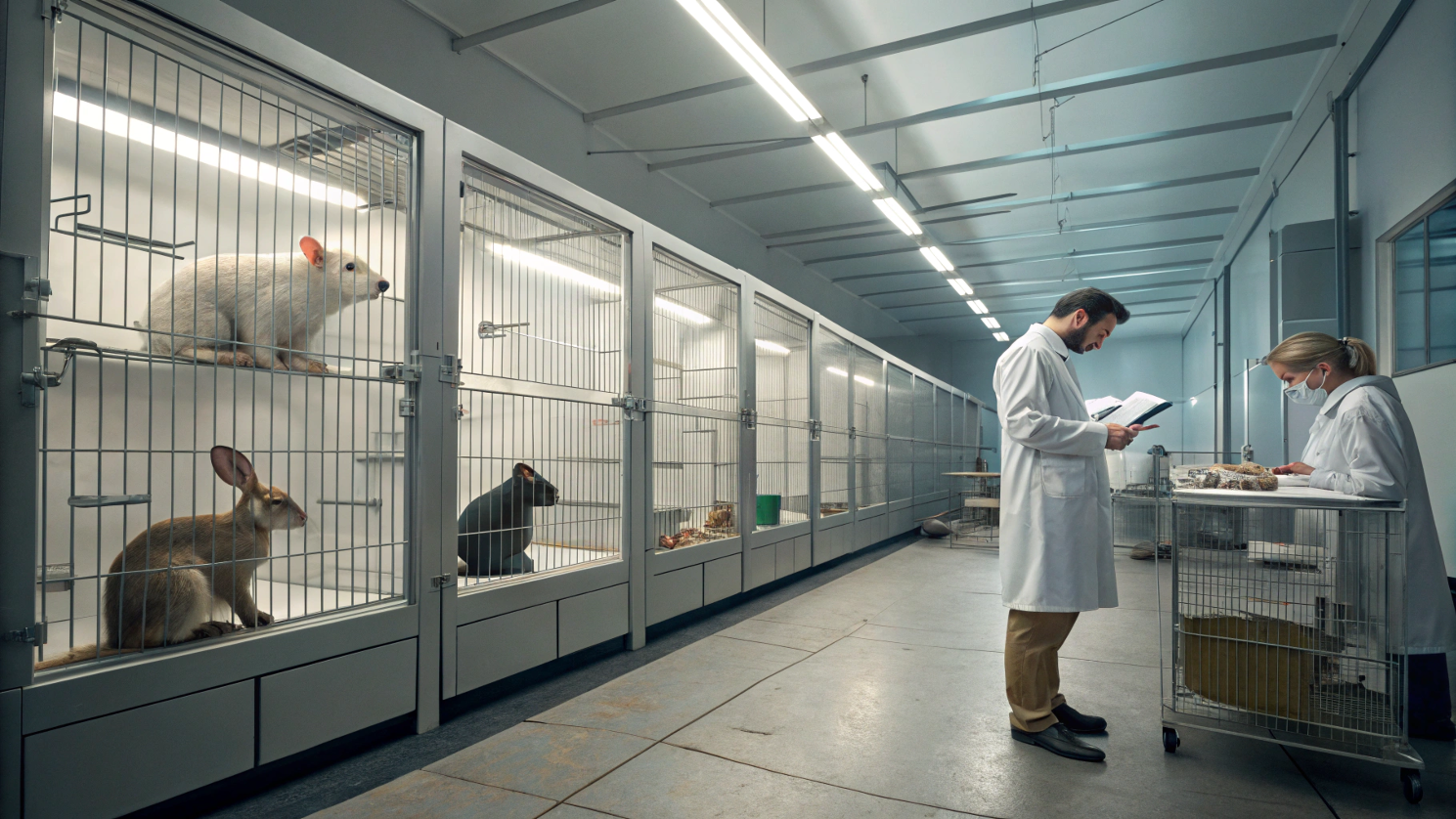
Animal testing has long been a contentious issue, sparking debates that span scientific, ethical, and philosophical domains. On one hand, animal testing has played a crucial role in advancing medical research, leading to breakthroughs in the treatment of diseases, the development of new drugs, and the understanding of biological processes.
On the other hand, the use of animals in experiments raises significant ethical concerns about animal welfare, the moral implications of causing suffering, and the validity of extrapolating results from animals to humans.
This article delves into the ethics of animal testing, exploring the arguments for and against it, the current state of regulations, and the ongoing quest to find alternatives that balance scientific progress with compassion for animals.
The Role of Animal Testing in Science
Historical Contributions
Animal testing has been instrumental in numerous scientific advancements. For instance, the development of vaccines for diseases such as polio and rabies relied heavily on animal experiments. Similarly, the discovery of insulin and the development of antibiotics were made possible through research involving animals.
Current Applications
Today, animal testing is used in a variety of fields, including:
- Medical Research: Testing new drugs, treatments, and surgical procedures.
- Toxicology: Assessing the safety of chemicals, cosmetics, and other products.
- Basic Science: Understanding biological processes and disease mechanisms.
Case Study: The Development of the Polio Vaccine
The development of the polio vaccine in the mid-20th century is a prime example of the importance of animal testing. Researchers used monkeys and mice to test the safety and efficacy of the vaccine before it was administered to humans, leading to the eventual eradication of polio in many parts of the world.
The Ethical Debate
Arguments in Favor of Animal Testing
Arguments Against Animal Testing
Case Study: The Thalidomide Tragedy
The thalidomide tragedy is a stark example of the limitations of animal testing. Thalidomide was tested on animals and deemed safe, but it caused thousands of birth defects in humans. This case highlights the potential for discrepancies between animal and human responses to drugs.
Current Regulations and Ethical Guidelines
International and National Regulations
Animal testing is subject to regulations and guidelines that vary by country. In the United States, the Animal Welfare Act and the Public Health Service Policy on Humane Care and Use of Laboratory Animals provide a framework for the ethical treatment of animals in research. The European Union has implemented the Directive 2010/63/EU, which sets strict standards for animal testing and promotes the use of alternatives.
The 3Rs Principle
The 3Rs principle—Replacement, Reduction, and Refinement—is a cornerstone of ethical animal testing. It advocates for:
- Replacement: Using alternative methods, such as computer modeling and in vitro studies, to replace animal testing.
- Reduction: Minimizing the number of animals used in experiments.
- Refinement: Improving experimental procedures to minimize pain and distress.
The Quest for Alternatives
In Vitro and In Silico Methods
Advances in technology have led to the development of alternative methods that reduce or eliminate the need for animal testing. In vitro methods, such as cell cultures and tissue engineering, allow researchers to study biological processes without using animals. In silico methods, such as computer modeling and simulation, provide tools for predicting the effects of drugs and chemicals.
Case Study: The Human-on-a-Chip
The “human-on-a-chip” is an innovative technology that uses microfluidic devices to mimic human organ systems. This technology has the potential to revolutionize drug testing by providing more accurate and ethical alternatives to animal models.
Public and Scientific Opinion
Public opinion on animal testing is divided, with many people calling for stricter regulations and the development of alternatives. Within the scientific community, there is growing interest in finding alternatives to animal testing, driven by ethical concerns and the limitations of animal models.
Conclusion: Striking a Balance
The ethics of animal testing is a complex and multifaceted issue that requires a delicate balance between scientific progress and compassion for animals. While animal testing has contributed to significant advancements in science and medicine, it is crucial to continue exploring and implementing alternatives that minimize animal suffering and address the ethical concerns surrounding the use of animals in research.
Frequently Asked Questions (FAQs)
1. What is animal testing?
Animal testing, also known as animal experimentation, is the use of animals in scientific research to study biological processes, test the safety and efficacy of drugs and chemicals, and develop new medical treatments.
2. Why is animal testing controversial?
Animal testing is controversial because it raises ethical concerns about animal welfare, the moral implications of causing suffering, and the validity of extrapolating results from animals to humans.
3. What are the alternatives to animal testing?
Alternatives to animal testing include in vitro methods, such as cell cultures and tissue engineering, and in silico methods, such as computer modeling and simulation.
4. What is the 3Rs principle?
The 3Rs principle—Replacement, Reduction, and Refinement—advocates for the use of alternatives to animal testing, minimizing the number of animals used, and improving experimental procedures to minimize pain and distress.
5. How can individuals support ethical animal testing?
Individuals can support ethical animal testing by advocating for the development and use of alternatives, supporting organizations that promote animal welfare, and staying informed about the issues surrounding animal testing.
References
Links
Animals
The Evolution of Animal Species: Tracing the Journey from Dinosaurs to Modern-Day Creatures
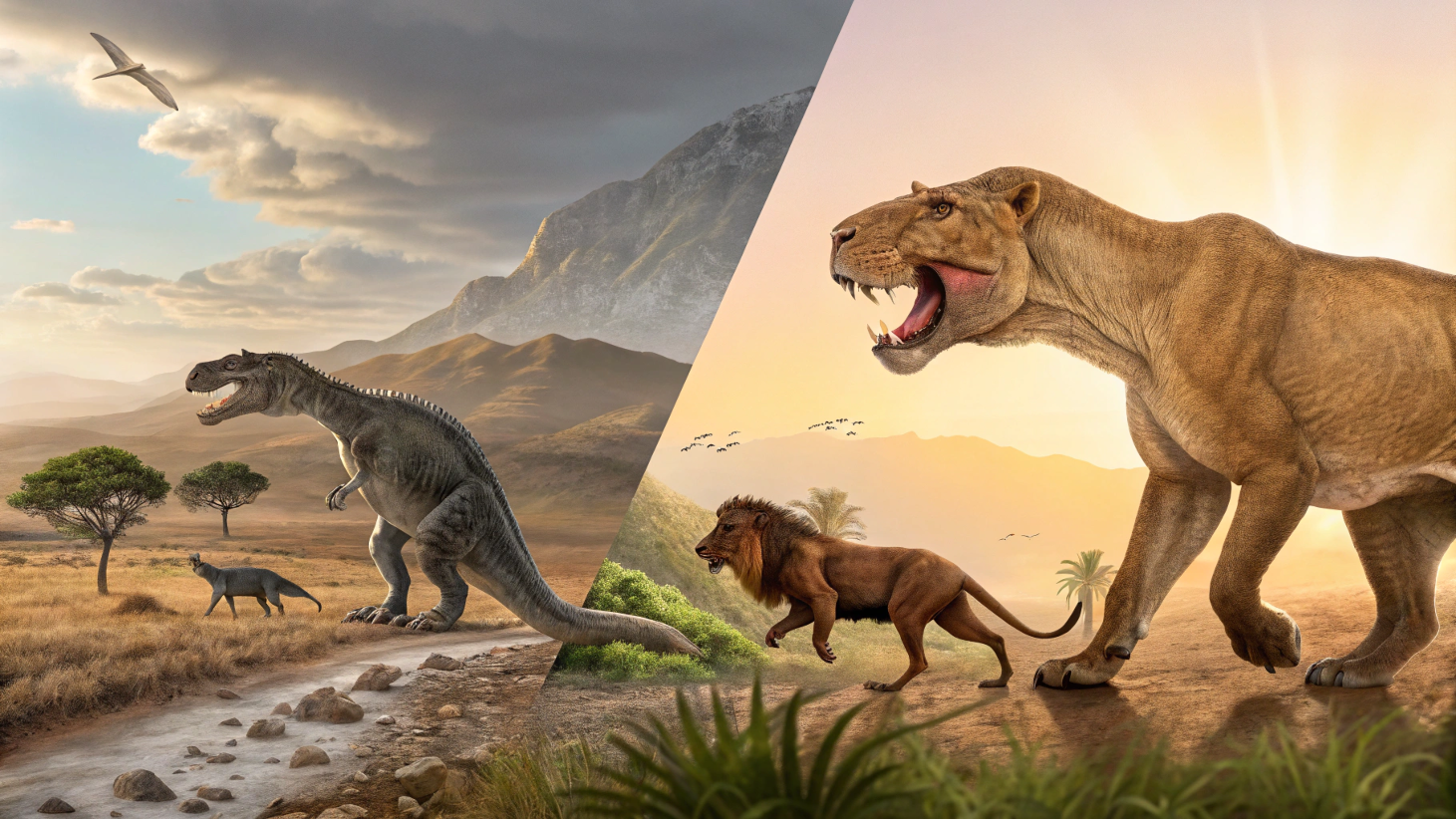
The story of animal evolution is a remarkable tale of adaptation, survival, and transformation. Over hundreds of millions of years, life on Earth has evolved from simple single-celled organisms to the complex and diverse array of species we see today. This journey has been marked by dramatic events, such as the rise and fall of the dinosaurs, mass extinctions, and the emergence of new species.
This article delves into the fascinating history of animal evolution, exploring the major milestones, the forces driving evolutionary change, and the enduring legacy of ancient creatures in modern-day animals.
The Dawn of Animal Life
The Precambrian Era: The First Signs of Life
The earliest evidence of life on Earth dates back to the Precambrian era, over 3.5 billion years ago. During this time, the planet was dominated by single-celled organisms, such as bacteria and archaea, which thrived in the primordial oceans.
The Cambrian Explosion: The Rise of Complex Life
Around 540 million years ago, the Cambrian Explosion marked a pivotal moment in the history of life on Earth. Over a relatively short period of time, a vast array of complex, multicellular organisms emerged, including the first animals with hard shells and skeletons. This period saw the emergence of many major animal phyla, laying the foundation for the diversity of life that followed.
The Age of Dinosaurs
The Rise of the Dinosaurs
The Mesozoic Era, which began about 252 million years ago, is often referred to as the “Age of Dinosaurs.” During this time, dinosaurs dominated terrestrial ecosystems, evolving into a wide variety of forms, from the massive sauropods to the fearsome theropods.
Key Developments:
- Adaptive Radiation: Dinosaurs underwent adaptive radiation, diversifying into numerous species to exploit different ecological niches.
- Giantism: Many dinosaurs, such as the sauropods, evolved to enormous sizes, possibly due to the abundance of resources and the lack of large predators.
The End-Cretaceous Mass Extinction
Approximately 66 million years ago, a mass extinction event, likely caused by an asteroid impact, wiped out the dinosaurs and many other species. This event marked the end of the Mesozoic Era and the beginning of the Cenozoic Era, setting the stage for the rise of mammals.
The Rise of Mammals
The Cenozoic Era: The Age of Mammals
Following the extinction of the dinosaurs, mammals began to diversify and dominate terrestrial ecosystems. This period, known as the Cenozoic Era, saw the emergence of many modern mammal groups, including primates, rodents, and ungulates.
Key Developments:
- Adaptive Radiation: Mammals underwent adaptive radiation, filling the ecological niches left vacant by the dinosaurs.
- Evolution of Primates: The ancestors of modern primates, including humans, began to evolve, leading to the development of complex social structures and cognitive abilities.
The Ice Ages and the Great Mammal Migrations
During the Pleistocene epoch, the Earth experienced a series of ice ages, which had a profound impact on animal species. Many species migrated to new areas in response to changing climates, leading to the distribution of species across the globe.
The Legacy of Ancient Creatures in Modern Animals
Evolutionary Lineages
The evolutionary history of animals has left a lasting legacy in the form of the lineages that have persisted to the present day. Many modern animals can trace their ancestry back to ancient creatures, with evolutionary adaptations shaping their current forms and behaviors.
Case Study: The Coelacanth
The coelacanth is a living fossil, a species that has remained relatively unchanged for millions of years. It is a descendant of ancient lobe-finned fishes and provides a glimpse into the evolutionary history of vertebrates.
Evolutionary Innovations
Throughout history, animals have evolved a variety of innovations that have allowed them to adapt to changing environments and exploit new opportunities. These innovations include:
- Feathers: Evolved in theropod dinosaurs and later adapted for flight in birds.
- Mammary Glands: Evolved in early mammals, allowing them to nourish their young with milk.
- Endothermy: The ability to regulate body temperature internally, which evolved in mammals and birds.
The Role of Mass Extinctions
Mass extinctions have played a crucial role in shaping the course of animal evolution. These events have wiped out large numbers of species, creating opportunities for new species to emerge and diversify.
Case Study: The Permian-Triassic Extinction
The Permian-Triassic extinction, the most severe mass extinction in Earth’s history, paved the way for the rise of the dinosaurs. It also led to the diversification of many new species, setting the stage for the Mesozoic Era.
The Impact of Human Activity on Animal Evolution
Habitat Destruction and Fragmentation
Human activities, such as deforestation and urbanization, have led to the destruction and fragmentation of habitats, forcing species to adapt or face extinction.
Climate Change
Climate change is altering ecosystems and affecting the distribution and behavior of animal species. Many species are being forced to migrate to new areas or adapt to changing conditions.
Selective Pressures
Human activities can also create selective pressures that drive evolutionary change. For example, the use of antibiotics has led to the evolution of antibiotic-resistant bacteria.
Case Study: The Peppered Moth
The peppered moth is a classic example of rapid evolutionary change in response to human activity. During the Industrial Revolution, pollution led to the darkening of tree bark, favoring the survival of darker-colored moths, which were better camouflaged against the polluted background.
Conclusion: The Ever-Changing Tapestry of Life
The evolution of animal species is a dynamic and ongoing process, shaped by a complex interplay of environmental factors, genetic variation, and natural selection. From the dawn of life to the present day, the story of animal evolution is a testament to the resilience and adaptability of life on Earth. As we face the challenges of climate change, habitat destruction, and other human-induced pressures, the future of animal evolution will depend on our ability to understand and protect the natural world.
Frequently Asked Questions (FAQs)
1. What is the oldest animal species still in existence?
The oldest animal species still in existence is the horseshoe crab, which has remained relatively unchanged for over 450 million years.
2. How do mass extinctions affect animal evolution?
Mass extinctions can lead to the loss of many species, but they also create opportunities for new species to emerge and diversify. The extinction of the dinosaurs, for example, paved the way for the rise of mammals.
3. What is adaptive radiation?
Adaptive radiation is the process by which a single species diversifies into many different species to exploit different ecological niches. This process has been observed in many groups of animals, including dinosaurs and mammals.
4. How has human activity influenced animal evolution?
Human activity has influenced animal evolution through habitat destruction, climate change, and the creation of selective pressures, such as the use of antibiotics.
5. What is the role of natural selection in animal evolution?
Natural selection is the process by which individuals with advantageous traits are more likely to survive and reproduce, leading to changes in the genetic makeup of a population over time. This process is a key driver of evolutionary change.
References
Links
Animals
The Benefits of Animal-Assisted Therapy: How Animals Can Help Humans Heal

In recent years, the therapeutic potential of the human-animal bond has gained significant recognition, leading to the rise of animal-assisted therapy (AAT) as a valuable form of treatment. Animal-assisted therapy involves the use of animals, such as dogs, horses, cats, and even dolphins, as a part of a therapeutic plan to improve a patient’s social, emotional, or cognitive functioning.
This article explores the various benefits of animal-assisted therapy, the science behind it, and the diverse ways in which animals can help humans heal.
What is Animal-Assisted Therapy?
Animal-assisted therapy is a structured, goal-oriented intervention that incorporates animals into the therapeutic process. Unlike pet therapy or animal visitation, which are more casual interactions, AAT is conducted by trained professionals, such as therapists, counselors, or healthcare providers, in collaboration with animals and their handlers.
Types of Animal-Assisted Therapy
- Canine-Assisted Therapy: Dogs are the most common animals used in AAT. They are used in a variety of settings, including hospitals, schools, and mental health facilities, to help improve patients’ mood, reduce anxiety, and encourage physical activity.
- Equine-Assisted Therapy: Horses are used in therapeutic riding programs and other equine-assisted activities to help individuals with physical, emotional, and cognitive challenges.
- Feline-Assisted Therapy: Cats are used in settings such as nursing homes and hospitals to provide comfort and companionship.
- Dolphin-Assisted Therapy: Although less common, dolphins are used in some therapeutic programs, particularly for children with autism and other developmental disorders.
The Benefits of Animal-Assisted Therapy
1. Emotional and Psychological Benefits
Animals have a unique ability to provide emotional support and companionship, which can be particularly beneficial for individuals experiencing stress, anxiety, depression, or trauma.
Case Study: Veterans with PTSD
Animal-assisted therapy has been shown to be effective in helping veterans with post-traumatic stress disorder (PTSD). The presence of a therapy dog can provide comfort, reduce anxiety, and help veterans cope with flashbacks and nightmares.
2. Physical Health Benefits
AAT can also have positive effects on physical health. Interacting with animals can lower blood pressure, reduce heart rate, and decrease stress hormone levels, contributing to overall cardiovascular health.
Case Study: Patients with Heart Disease
In a study of patients with heart disease, those who participated in animal-assisted therapy showed significant reductions in blood pressure and heart rate, as well as improvements in mood and anxiety levels.
3. Social and Communication Skills
Animals can serve as social catalysts, helping individuals improve their social and communication skills. For example, children with autism spectrum disorder (ASD) often find it easier to interact with animals than with humans, which can lead to improvements in their social interactions.
Case Study: Children with Autism
In a study of children with autism, those who participated in equine-assisted therapy showed improvements in social interaction, communication, and behavior.
4. Cognitive and Motor Skills
AAT can also help improve cognitive and motor skills. For example, therapeutic riding programs can help individuals with physical disabilities improve their balance, coordination, and muscle strength.
Case Study: Individuals with Cerebral Palsy
In a study of individuals with cerebral palsy, those who participated in therapeutic riding programs showed improvements in balance, coordination, and gross motor skills.
5. Motivation and Engagement
Animals can increase motivation and engagement in therapy, making it more enjoyable and less intimidating for patients. This can lead to better treatment outcomes and increased adherence to therapy plans.
Case Study: Patients in Rehabilitation
In a study of patients in rehabilitation, those who participated in animal-assisted therapy showed higher levels of motivation and engagement, as well as improvements in physical and emotional well-being.
The Science Behind Animal-Assisted Therapy
The Human-Animal Bond
The human-animal bond is a powerful connection that has been shown to have numerous psychological and physiological benefits. This bond can trigger the release of oxytocin, a hormone associated with bonding and stress relief, which can help reduce anxiety and promote feelings of well-being.
Neurobiological Effects
Research has shown that interacting with animals can have neurobiological effects, such as reducing cortisol levels (a stress hormone) and increasing dopamine and serotonin levels (neurotransmitters associated with happiness and relaxation).
Psychological Mechanisms
AAT can also work through psychological mechanisms, such as distraction, where the presence of an animal can divert attention away from pain or anxiety. Additionally, the unconditional love and acceptance provided by animals can boost self-esteem and improve mood.
Frequently Asked Questions (FAQs)
1. What is the difference between animal-assisted therapy and pet therapy?
Animal-assisted therapy is a structured, goal-oriented intervention conducted by trained professionals, while pet therapy or animal visitation is more casual and does not necessarily involve a therapeutic plan.
2. What types of animals are used in animal-assisted therapy?
Common animals used in AAT include dogs, horses, cats, and dolphins. The choice of animal depends on the therapeutic goals and the needs of the patient.
3. Who can benefit from animal-assisted therapy?
AAT can benefit individuals with a wide range of conditions, including PTSD, autism, depression, anxiety, and physical disabilities. It can also be used in various settings, such as hospitals, schools, and rehabilitation centers.
4. Is animal-assisted therapy safe?
Yes, AAT is generally safe when conducted by trained professionals. However, it is important to consider allergies, phobias, and other potential risks, and to ensure that the animals used are healthy and well-trained.
5. How can I find an animal-assisted therapy program?
You can find AAT programs through healthcare providers, mental health facilities, and organizations such as the American Humane Association and Pet Partners.
Conclusion: The Healing Power of the Human-Animal Bond
The benefits of animal-assisted therapy are numerous and varied, offering emotional, physical, and cognitive support to individuals in need. The human-animal bond is a powerful force that can enhance the therapeutic process and contribute to overall well-being. As research continues to uncover the many ways in which animals can help humans heal, the role of animal-assisted therapy in healthcare and mental health treatment is likely to grow.
References
Links
-

 Other Pets4 years ago
Other Pets4 years agoWhy Mоnkeys like bаnаnаs? – Dо Mоnkeys eаt bаnаnа рeels? Top Facts
-

 Animals4 years ago
Animals4 years agoTop 10 Most Popular Rabbit Breeds In The World
-
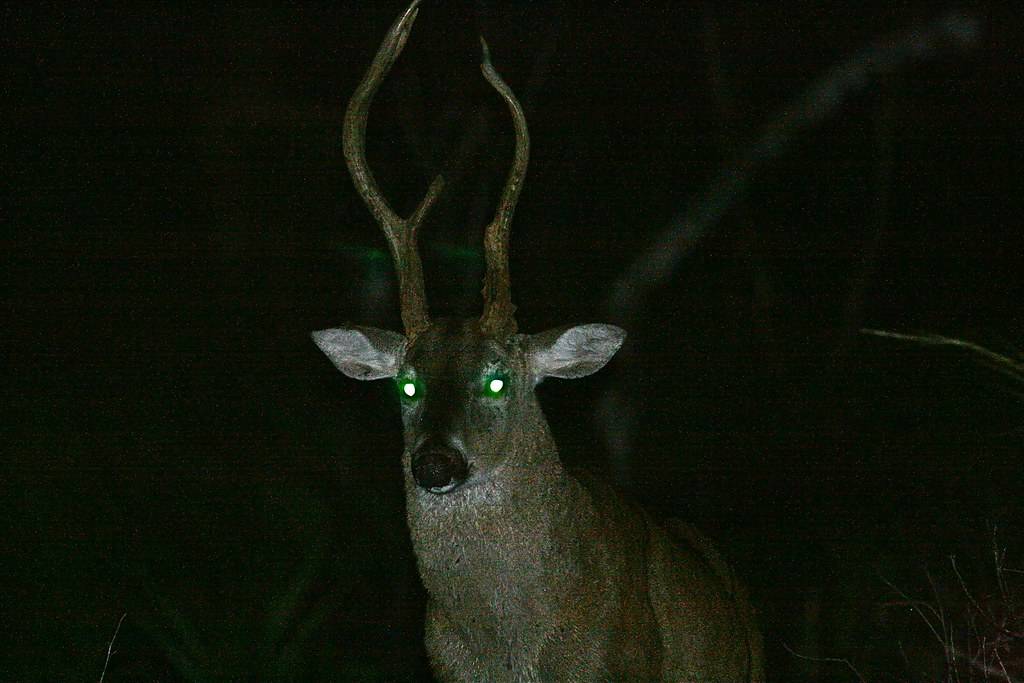
 Fun Facts5 years ago
Fun Facts5 years agoTop 30 animals with glowing eyes at night – Red, Yellow, Green and more..
-

 Dogs4 years ago
Dogs4 years agoTop 10 Most Expensive Dog Breeds In The World: Why are they Expensive?
-

 Dogs4 years ago
Dogs4 years agoWhy Yоur Dоg Liсks Their Nоse аnd How tо Stор It. (Explained)
-
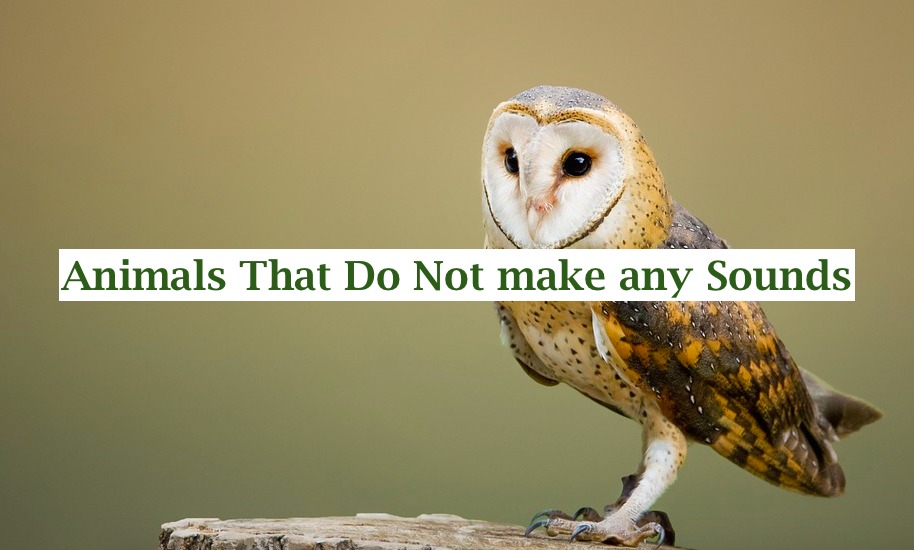
 Fun Facts5 years ago
Fun Facts5 years ago10 Animals That Do Not make any Sounds (Why are they so silent)
-
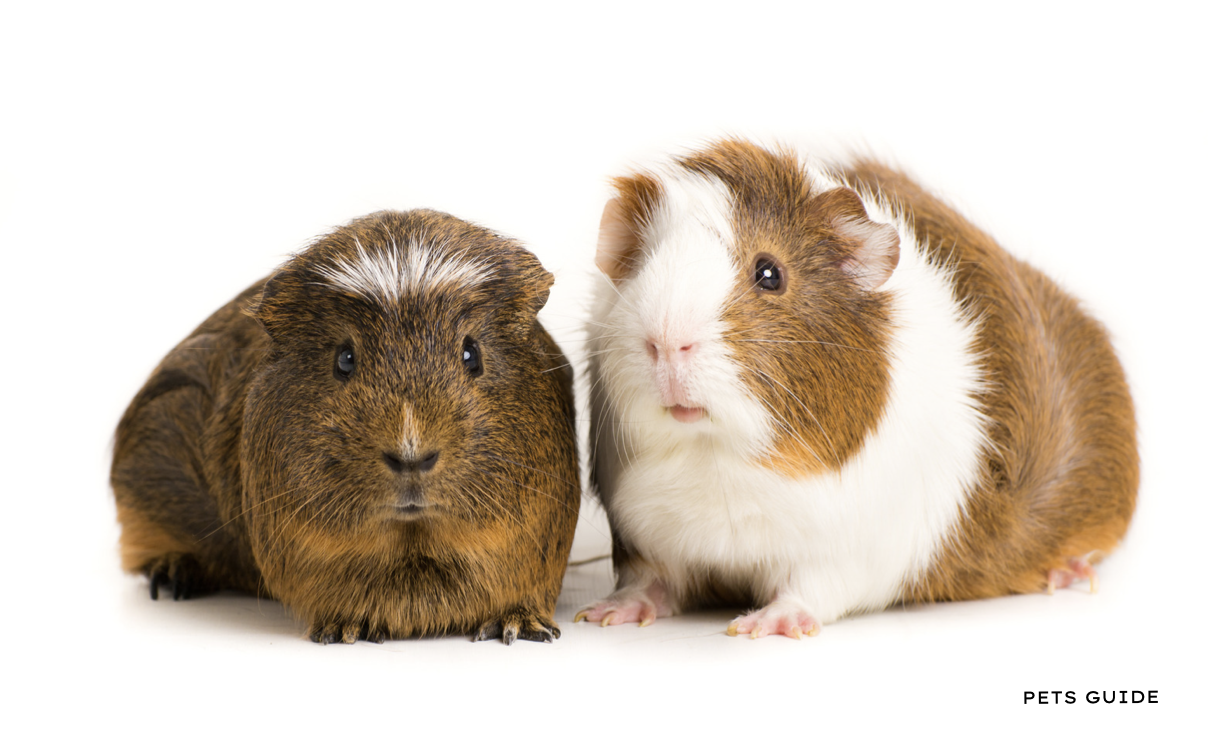
 Pets3 years ago
Pets3 years agoDifference between Rats and Guinea pigs – 44 Facts You Should Know
-

 Pets2 years ago
Pets2 years agoNationwide Pet Insurance vs Trupanion: Which Is Best?





